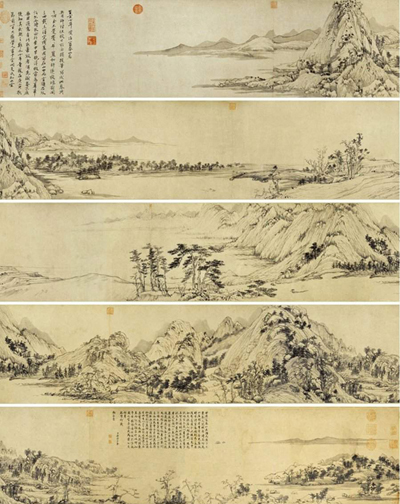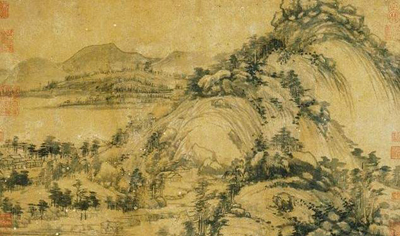 |
Large Medium Small |
Visitors to the Palace Museum in Taipei next June are in for a treat, as they will be able to view the two parts of a legendary Chinese painting together.
|
 The longer piece of Dwelling in the Fuchun Mountains, currently kept in the Palace Museum in Taipei. |
Dwelling in the Fuchun Mountains is one of the few surviving works by the Yuan Dynasty (1271-1368) painter Huang Gongwang (1269-1354).
The painting has been a favorite of painters and collectors for centuries. In 1650 the owner Wu Hongyu, decided to burn the painting so he could take it with him when it died. Fortunately his nephew rescued the painting though the scroll was torn in two.
The right part, 51.4 cm long, is kept in the mainland's Zhejiang Museum, while the left part, 636.9-cm-long, is held in Taipei's Palace Museum.
The Taipei Palace Museum formally announced on Thursday that the two parts of the scroll will be exhibited together in a four-month exhibition beginning June 2011.
The painting vividly depicts an early autumn scene on the banks of the Fuchun River in Hangzhou. It is regarded as one of the greatest achievements of traditional Chinese landscape painting technique.
"The long scroll was finished by Huang when he was 82 years old, and it can be considered an abstract representation of his whole life. He used new techniques to create it," says Chiang Hsun, a renowned art history expert in Taiwan.
The scroll is regarded as a "painting symphony," with the right part an overture, Chiang said, adding that he "had dreamed of seeing the two pieces together for many years."
Huang's work marked the start of a new Chinese painting school, Literati Painting, which dominated the Chinese art scene in the following centuries.
Painters of the school were also poets, intellectuals and calligraphers, not just professional painters. They turned painting into a comprehensive means of self-expression by writing poems and short essays on the sides of their works.
"In addition to displaying the painting, the exhibition will celebrate Huang's life, the works of his friends and his influence in Chinese art history," says Kung-shin Chou, curator of the Palace Museum in Taipei.
|
 The piece of Dwelling in the Fuchun Mountains, kept in the Zhejiang Museum. |
For the exhibition, the museum will collaborate with the Palace Museum in Beijing, the National Museum of China and museums in Shanghai, Nanjing and Yunnan.
"We have never worked with so many mainland counterparts in one exhibition," she says.
In March, Chinese Premier Wen Jiabao called for the scroll's two pieces to reunite.
Xinhua